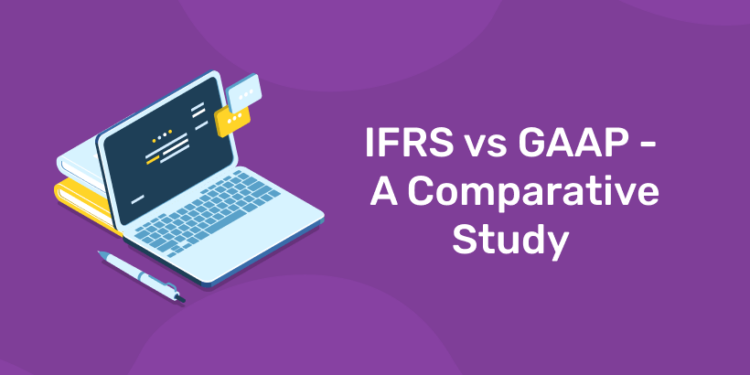Table of Contents
Without accounting regulations, companies may simply manipulate their financial records to appear more profitable. Additionally, it would be considerably more challenging to compare the performance of other companies. International Financial Reporting Standards (IFRS) and generally recognized accounting principles (GAAP) are relevant. Most businesses prepare financial statements per these two sets of standards—one American and one foreign. People can feel confident that firms are appropriately disclosing their financial information thanks to the accounting rules in place, which help them make wise financial decisions.
Unlock Your Accounting Potential – Enroll in Our Comprehensive Course Today!
What are Generally Accepted Accounting Principles (GAAP)?
The Financial Accounting Standards Board (FASB) established generally accepted accounting principles (GAAP) as the accounting standard for the Securities and Exchange Commission (SEC) in the United States. All domestic and Canadian publicly traded corporations must adhere to this set of rules when submitting their financial statements. GAAP is designed to aid investors in their analysis of financial information and comparison of various businesses so they may make wise financial decisions.
What are International Financial Reporting Standards (IFRS)?
1: Accounting provides information on
The International Accounting rules Board (IASB) has established the accounting rules known as International Financial Reporting Standards (IFRS). 15 of the G20 nations abide by this set of rules. While Japan permits businesses to adhere to IFRS standards if they so desire, China, India, and Indonesia do not, despite having comparable requirements.
| Accounting courses we offer |
Accounting courses in Different Cities |
| Business Accounting & Finance Certification | |
| Tally Course | |
| Taxation Course | |
| UAE Accounting Course | |
| GST Course |
What are the Differences between GAAP and IFRS?
There are notable variations between GAAP and IFRS, even though they both concern the format and filing of financial papers. There are two main differences:
- Enforcement – Since GAAP is a rule-based accounting standard, US publicly traded corporations are legally compelled to abide by its rules. However, since IFRS is based on standards, no one is obligated to abide by its recommendations, even though they are strongly advised. The theoretical foundation and guiding principles of IFRS as a result provide more opportunity for interpretation and may necessitate extensive disclosures on financial statements.
- Source and scope. While IFRS is adopted globally, GAAP is based in the US. The IASB, which develops IFRS, has significant global sway; its accounting standards are adapted to accounting regulations in nations all over the world. The only exception is the US, where the Securities and Exchange Commission mandates that American businesses prepare their financial statements in accordance with GAAP.
There are other notable differences in how GAAP and IFRS handle specific elements of various financial documents, including:
1. Inventory Valuation Methods
Calculating the value of your inventory is known as inventory valuation. The first in, first out (FIFO) method, which assumes that the first (or oldest) items in your inventory will be the first to sell; the last in, first out (LIFO) method, assumes that the latest (or newest) items in your inventory will be the first to sell; and the weighted average method, which calculates the value of the remaining portion of your inventory using the proceeds from the sale of a portion of it.
Here’s how GAAP and IFRS differ when it comes to inventory valuation methods:
- GAAP. Companies are free to employ any one of the three inventory valuation techniques under GAAP. When using FIFO, GAAP calculates inventory valuation using “net asset value” which is the sum of a company’s assets less the sum of its liabilities.
- IFRS. Because LIFO can be used to manipulate a company’s earnings to reduce its tax liability, IFRS only permits the FIFO and weighted average methods. When using FIFO, IFRS calculates an asset’s “net realizable value,” which takes into account its potential revenue less an estimate of the costs, fees, and taxes related to the sale.
Become an Accounting Pro – Learn from Industry Experts!
2. Cash flow statement
A cash flow statement is a type of financial statement that details the precise inflow and outflow of cash and cash equivalents for a given reporting period. Cash flow statements are handled differently by GAAP and IFRS, particularly in how they categorize interest and dividends:
- GAAP. According to GAAP, dividends paid are recorded in the financing section, while dividends received are recorded under the operating section.
- IFRS. All interest and dividends paid under IFRS may be listed in the financing or operating section.
3. Balance sheet
The assets, liabilities, and shareholder equity of a company are listed on a balance sheet, which is a financial statement. Knowing how to structure your balance sheet will help investors and other interested parties read it quickly and accurately. The categories on a balance sheet are organized differently under GAAP and IFRS:
- GAAP. The most liquid assets, such as current assets, non-current assets, current liabilities, non-current liabilities, and owners’ equity, must be listed first in accordance with GAAP.
- IFRS. According to IFRS, current assets, non-current assets, owners’ equity, non-current liabilities, and current liabilities should be listed in the assets’ order of decreasing liquidity, starting with the least liquid assets.
4. Asset revaluation
The assets of a company may change in value over a certain period, necessitating a re-evaluation (i.e., reapproval). Asset revaluation is essential because it helps you budget for the replacement costs of fixed assets once their useful lives have passed and because it gives investors a more accurate picture of your company. Asset revaluation can also lower your debt-to-equity ratio, which will improve the company’s financial picture.
Different approaches to asset revaluation are used under GAAP and IFRS:
- GAAP. GAAP only permits the revaluation of marketable securities (i.e., investments and stocks) using fair market value.
- IFRS. More assets, such as plant, property, and equipment (PPE), inventories, intangible assets, and investments in marketable securities, may be revalued under IFRS.
5. Inventory write-down reversals
Inventory held by a company could depreciate over time. For instance, an asset may depreciate due to market or technological factors, which is referred to as a “loss on impairment.” Businesses must write down inventory as soon as its cost exceeds its net realisable value (i.e., how much the inventory is expected to bring in when sold), as required by GAAP and IFRS.
While a loss is frequently irreversible, if the impairing factor is removed, the asset’s value might rise once more. In these circumstances, GAAP prohibits companies from revaluing the asset at its original cost. Contrarily, IFRS permits some assets to be valued up to their original value and depreciation to be taken into account.
Practical Accounting Training for Real-World Success – Sign Up Now!
6. Development costs
Development costs are the internal expenses related to creating intangible assets, such as patents, intellectual property, and client relationships, which have no physical form. While IFRS permits companies to capitalise and amortise these costs over time, GAAP takes these costs into account. Therefore, your accounting standard affects the final balance on your balance sheet and where you must list intangible assets on your financial documents.
| IFRS | GAAP |
| Stands for | |
| International Financial Reporting Standard | Generally Accepted Accounting Principles |
| Developed by | |
| International Accounting Standard Board (IASB) | Financial Accounting Standard Board (FASB) |
| Adopted by | |
| Globally adopted in around 144 countries | Only adopted in the US |
| Based on | |
| Principles | Rules |
| Inventory Methods allowed | |
| IFRS allows only FIFO (First In First Out) inventory method for valuation of inventories | GAAP uses both FIFO (First In First Out) and LIFO (Last In First Out) method of inventory valuation |
| Inventory Reversal | |
| IFRS allows inventory write down reversal | GAAP does not allow inventory write down reversal |
| Income Statements | |
| In IFRS, extraordinary items are not segregated and are included in the income statement | In GAAP, the extraordinary items are segregated and are shown below net income in the income statement |
| Valuation of Fixed Assets | |
| IFRS uses a revaluation model for valuation of fixed assets | GAAP uses a cost model for fixed asset valuation |
| Cost of Development | |
| Development costs under IFRS can be capitalised, provided certain conditions are met | Development costs cannot be capitalised in GAAP, it is always treated as an expense |
elevate your career with practical accounting training ! get a demo video !!
GAAP vs. IFRS FAQ
Describe GAAP.
Commonly Accepted Accounting Principles is referred to as GAAP. The Financial Accounting Standards Board (FASB) in the United States established a set of guidelines, standards, and recommendations for financial documents that are used by the Securities and Exchange Commission (SEC). When filing financial documents, all US companies that are publicly traded are required to adhere to GAAP.
IFRS vs. GAAP: Which is more accurate?
While it can be challenging to determine which is more accurate, some people believe IFRS to be more accurate than GAAP because it is regarded as an accounting standard that is more grounded in principles and better reflects the economics of a transaction. For instance, IFRS permits inventory write-downs to be undone in the future under certain conditions.
Can US businesses switch from GAAP to IFRS?
No, US businesses cannot substitute IFRS for GAAP. The Securities and Exchange Commission (SEC) mandates that US businesses submit their financial information in accordance with GAAP.
IFRS vs. GAAP: Which Is Better?
This is a perspective issue. While GAAP is more rules-based, IFRS is more principles-based. Some people may find a focus on principles more appealing because it more accurately captures the essence of a transaction. Convergence to IFRS, however, could be advantageous for both international corporations and investors given that the IFRS standard is widely used in practice.
Boost Your Career With Our Accredited Accounting Course! Get A Free Demo!
|
Related Links |
|










